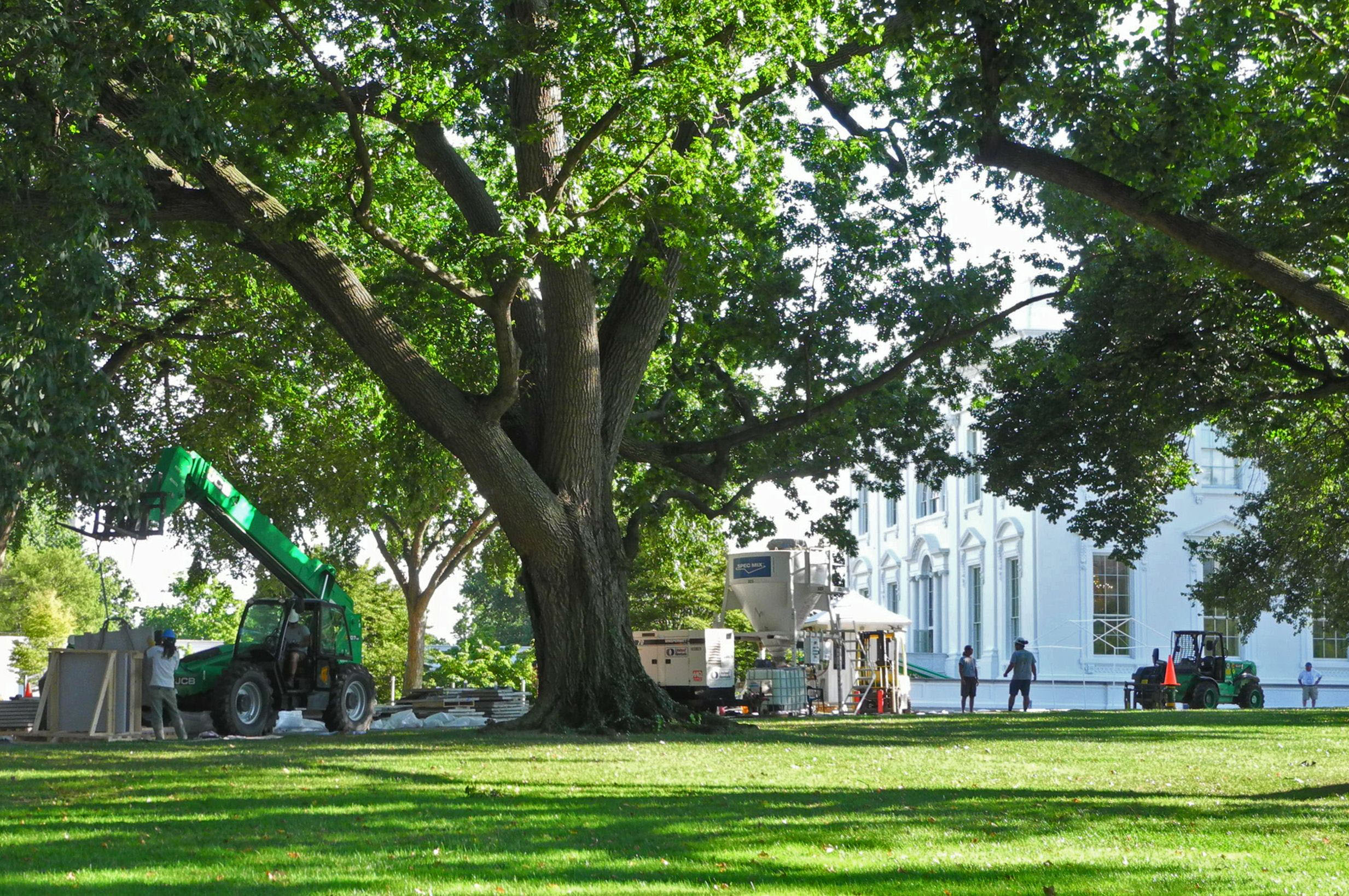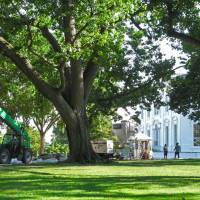Jimmy Carter first installed solar panels in 1979. Ronald Reagan called them a joke and had them removed in 1986. And this week, nearly three years after promising to restore them as a sign of the administration's commitment to renewable energy, President Obama is reinstalling solar panels on the White House roof.
The project is "a part of an energy retrofit that will improve the overall energy efficiency of the building," according to a White House official, who asked not to be identified because the installation is in process.
At the time of the October 2010 announcement, then-Energy Secretary Steven Chu and White House Council on Environmental Quality chair Nancy Sutley said the administration would conduct a competitive bidding process to buy between 20 and 50 solar panels.
The official did not identify the supplier or cost of the project Thursday, but wrote in an email that the White House "has begun installing American-made solar panels" and the initiative, "which will help demonstrate that historic buildings can incorporate solar energy and energy efficiency upgrades, is estimated to pay for itself in energy savings over the next eight years."
The retrofit also includes installing updated building controls and variable speed fans, the official added.
Back in 2010, Chu said: "This project reflects President Obama's strong commitment to U.S. leadership in solar energy and the jobs it will create here at home. Deploying solar energy technologies across the country will help America lead the global economy for years to come."
Solar panels have a long history at the White House. Carter had 32 installed in the late 1970s to provide hot water, but Ronald Reagan ordered them removed in one of his first acts as president. Then in 2003, President George W. Bush installed a photovoltaic system on a maintenance building and two solar thermal units. Though the panels weren't directly on the White House, the system heated its swimming pool.
Two grass-roots campaigns lobbied Obama at the start of his first term to restore the panels. On Thursday, climate activist Bill McKibben, whose group 350.org had organized one of the campaigns to install solar power at the White House, welcomed the news that the installation had begun.
"Better late than never — in truth, no one should ever have taken down the panels Jimmy Carter put on the roof way back in 1979," he said. "But it's very good to know that once again the country's most powerful address will be drawing some of that power from the sun."
In 1979, Carter had predicted the solar water heater and panels on the White House grounds will "either be a curiosity, a museum piece, an example of a road not taken, or it can be just a small part of one of the greatest and most exciting adventures ever undertaken by the American people."
The vast majority of the solar panels Carter installed went to Unity College in Maine, where some of them were used on the college's dining room and others were placed in storage. One is at Carter's presidential library in Atlanta, Georgia, while another is at the Smithsonian's Museum of American History. Two Swiss filmmakers chronicled the solar panels' fate in the film "A Road Not Taken."
The Obama administration has already undertaken a number of measures to increase the federal government's energy efficiency and use of renewable energy while cutting greenhouse gas emissions linked to climate change, a plan the president outlined in an executive order he signed in October 2009.
The administration has doubled the number of hybrid cars and trucks in the federal fleet, increased the government's use of renewable energy to 7 percent, cut the federal government's greenhouse gas emissions by 15 percent and committed $2 billion to upgrade federal buildings' energy efficiency through contracting requirements at no up-front cost to taxpayers.
So far, these measures have collectively saved 7 million gallons of gas — the equivalent of permanently removing 1.5 million cars from the road, according to the White House.
Obama has set a new goal of having 20 percent of the federal government's energy use come from renewable power by 2020, which includes the army, navy and air force deploying a combined 3 gigawatts of renewable energy by the end of the decade.


















With your current subscription plan you can comment on stories. However, before writing your first comment, please create a display name in the Profile section of your subscriber account page.